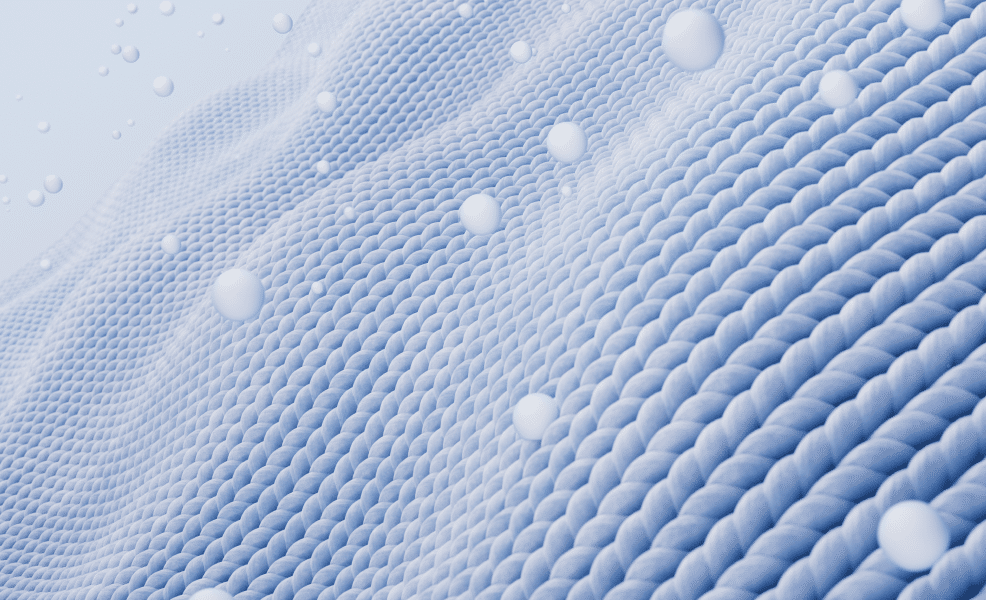Introduction
The textile industry is experiencing a surge of recent developments in medical textiles and is embracing textile innovations in healthcare, with a strong focus on technological innovations in medical textiles. This blog explores the cutting-edge advancements that are revolutionizing the landscape of health and wellbeing, with particular emphasis on trends in smart textiles in healthcare for promoting a healthier and more comfortable lifestyle. From antibacterial fabrics safeguarding against harmful microbes to wearable tech monitoring vital signs, textiles have evolved beyond mere clothing materials.
Antibacterial Fabrics: A Shield of Protection
In the wake of global health concerns, the demand for antibacterial fabrics has surged. Researchers and textile manufacturers have developed fabrics infused with antimicrobial agents, such as silver or copper nanoparticles, that inhibit the growth of harmful bacteria and viruses. These fabrics find applications in medical textiles, hospital linens, and personal protective equipment (PPE). Additionally, antibacterial fabrics have made their way into everyday wear, providing consumers with an added layer of protection.
Smart textiles in healthcare and wearable tech
Advancements in technology have given rise to smart textiles in healthcare, transforming fabrics into dynamic platforms for data collection and interaction. Wearable tech garments now integrate sensors, conductive yarns, and microelectronics to monitor vital signs, body temperature, and physical activity. These innovations enable users to track their health in real-time, making them ideal for athletes, patients, and individuals seeking to maintain an active lifestyle. Beyond health monitoring, wearable tech garments can also adjust their properties based on environmental conditions, ensuring comfort and well-being.
Benefits of using smart textiles in healthcare
- Continuous Monitoring: Smart textiles enable real-time health parameter tracking, facilitating early issue detection and timely intervention.
- Personalized Healthcare: Data from smart textiles allows tailored interventions, enhancing treatment effectiveness and promoting individualized care.
- Improved Patient Experience: Comfortable and unobtrusive, smart textiles enhance patient experience, contributing to better adherence to healthcare routines and reduced discomfort.
Moisture Management and Temperature Regulation
Textile innovation has also improved moisture management and temperature regulation. Fabrics with moisture-wicking properties draw sweat away from the skin, keeping wearers dry and comfortable during physical activities. Temperature-regulating textiles, infused with phase-change materials, adjust to body heat, maintaining a consistent and comfortable temperature. These advancements not only enhance comfort but also reduce the risk of skin irritation and other health-related issues.
Compression Garments: Support and Recovery
Compression garments have gained popularity for their health and wellness benefits. Designed to provide targeted pressure on specific body parts, these garments improve circulation and provide muscle support. Athletes use compression wear to reduce muscle fatigue and enhance performance, while medical compression garments aid in managing conditions such as deep vein thrombosis and lymphedema. With advancements in textile engineering, compression garments offer an optimal balance of comfort and functionality.
UV Protection and Skin Care
The textile industry is embracing fabrics that offer effective UV protection. Ultraviolet protection factor (UPF) fabrics shield wearers from harmful UV rays, reducing the risk of sunburn and skin damage. These fabrics are invaluable for outdoor activities and for individuals with sensitive skin. Some textiles are even infused with skincare ingredients, such as aloe vera or vitamin E, which soothe and nourish the skin while providing UV protection.
Sustainable and Eco-friendly Innovations
As the focus on sustainability grows, textile innovations are aligning with eco-friendly practices. Sustainable fibers, such as organic cotton, bamboo, and Tencel®, are becoming more prevalent, reducing the industry’s environmental impact. Eco-friendly dyeing techniques, waterless printing, and low-impact finishing processes contribute to greener textile production. Moreover, innovations in biodegradable textiles and recycling technologies are paving the way for circular economy principles in the textile industry, reducing waste and promoting a more sustainable approach.
Mental Wellness and Textile Therapy
Beyond physical health, textiles are also playing a role in mental wellness. Textile therapy, or the use of fabrics to promote relaxation and comfort, has gained attention. Weighted blankets, for instance, provide a calming effect and aid in managing stress and anxiety. Fabrics infused with essential oils offer aromatherapy benefits, fostering a sense of well-being and relaxation. Textile innovations are blending physical and emotional comfort to support overall mental wellness.
Conclusion
The ever-evolving landscape of textile innovations is reshaping the textile industry with a focus on health and wellness. From antibacterial fabrics to wearable tech, moisture management to sustainable practices, textiles are becoming more than just materials; they are tools for enhancing comfort, protection, and overall well-being. As consumers seek products that prioritize health, the textile industry responds with cutting-edge advancements, addressing both physical and mental wellness. By embracing these innovations, the textile industry is contributing to a healthier and more sustainable world, where textiles play an integral role in supporting the health and wellness of individuals and communities alike.
FAQ
What are smart textiles?
Smart textiles, also known as smart fabrics or e-textiles, refer to materials that integrate electronic components and technology to offer additional functionalities beyond the traditional roles of fabrics. These textiles can respond to environmental stimuli or user inputs, making them dynamic and adaptive in various applications.
Q: How are smart textiles being used in healthcare?
Smart textiles in healthcare leverage technology to enhance patient care, monitoring, and overall well-being. These textiles can be embedded with sensors, actuators, and other electronic components to collect and transmit data, providing valuable insights for both patients and healthcare professionals.
Q. What are some benefits of using smart textiles in healthcare?
- Continuous Monitoring: Smart textiles enable real-time health parameter tracking, facilitating early issue detection and timely intervention.
- Personalized Healthcare: Data from smart textiles allows tailored interventions, enhancing treatment effectiveness and promoting individualized care.
- Improved Patient Experience: Comfortable and unobtrusive, smart textiles enhance patient experience, contributing to better adherence to healthcare routines and reduced discomfort.
Q: What is the future of smart textiles in healthcare?
The future of smart textiles in healthcare is poised for exciting developments. Expect innovations such as enhanced sensing capabilities for comprehensive health monitoring and the integration of AI and machine learning for more insightful data analysis.

